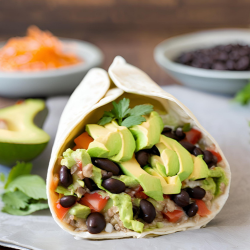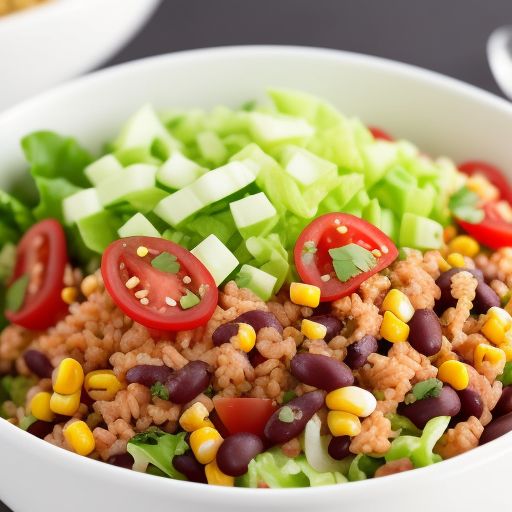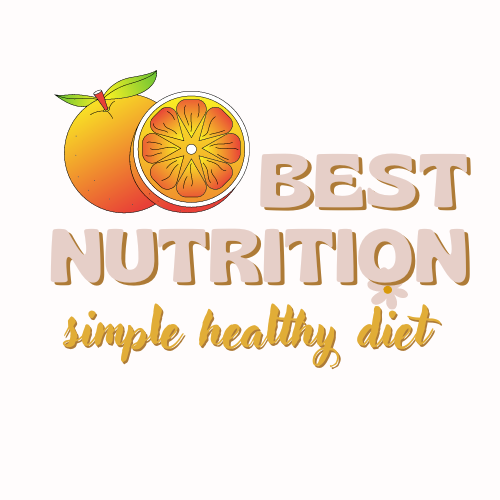Are you wondering how many servings of fruits and vegetables you should be eating each day? You’re not alone. Many people strive to maintain a balanced diet and improve their overall health, but understanding the right amount of fruits and vegetables to consume can sometimes be confusing. In this guide, we’ll explore the recommended fruit and vegetable servings, the importance of a balanced diet, and how it can contribute to your well-being.
Key Takeaways:
- Aim for at least 5 servings of fruits and vegetables every day to maintain a balanced diet and promote good health.
- An adult portion of fruits or vegetables is around 80g, and children should aim for the same.
- Include a variety of fresh, frozen, canned, and dried fruits and vegetables in your daily intake.
- Remember that potatoes and other starchy vegetables do not count towards your recommended servings.
- Consume fruit juices and smoothies in moderation, with no more than 150ml per day.
Serving sizes for fruits
When it comes to incorporating fruits into your diet, understanding proper portion sizes is essential to ensure you are getting an adequate intake of essential nutrients. The first source provides helpful guidelines for serving sizes of various types of fruits.
Fresh fruit portions:
A small fresh fruit: Fruits like plums or satsumas can be counted as a portion of 2 or more. These smaller fruits provide a convenient and refreshing snack option throughout the day.
A medium fresh fruit: Single medium-sized fruits, such as apples or bananas, are considered one portion. Incorporating these fruits into your meals or having them as a standalone snack can add a delightful burst of flavor and natural sweetness to your diet.
Large fruits: For larger fruits, like grapefruit or pineapple slices, you can count them as half a portion. These fruits offer a satisfying and tropical twist to your meals and snacks.
Dried fruit portions:
Dried fruits: When it comes to dried fruits, such as raisins or figs, it is recommended to consume them in approximately 30g portions. Dried fruits are a great option for adding natural sweetness and a concentrated source of fiber to your diet.
Tinned or frozen fruit:
When consuming tinned or frozen fruit, the quantity should be similar to that of a fresh portion. These convenient options allow you to enjoy fruits even when they are out of season, ensuring a variety of nutrients all year round.
Understanding these serving sizes can help you incorporate the right amount of fruits into your daily meals and snacks. Whether you choose fresh, dried, tinned, or frozen options, fruits provide a delicious and nutritious addition to your balanced diet.
| Fruit Type | Portion Size |
|---|---|
| Small fresh fruit (plums, satsumas) | 2 or more |
| Medium fresh fruit (apples, bananas) | 1 portion |
| Large fruit (grapefruit, pineapple slices) | ½ portion |
| Dried fruits (raisins, figs) | Approximately 30g |
| Tinned or frozen fruit | Similar portion size to fresh |
Serving sizes for vegetables
Green vegetables
Incorporating green vegetables into your diet is essential for maintaining a balanced and nutritious meal plan. According to the first source, a portion of green vegetables, such as broccoli or spinach, typically consists of 2 spears or 2 heaped tablespoons. These veggies are packed with essential vitamins and minerals that contribute to overall health and well-being. Including them in your meals can enhance the nutritional value of your diet while adding a delightful pop of color to your plate.
Cooked vegetables
Cooking vegetables is a popular method of preparation that can soften their texture and bring out unique flavors. The first source recommends consuming approximately 3 heaped tablespoons of cooked vegetables, like carrots or sweetcorn, per portion. Cooking vegetables not only makes them more palatable but also allows for easier digestion and absorption of nutrients. Experimenting with different cooking techniques such as steaming, roasting, or sautéing can add variety and excitement to your meals.
Salad vegetables
Salads are a refreshing way to incorporate vegetables into your diet. The first source suggests consuming 3 sticks of salad vegetables, such as celery, or 1 medium tomato per portion. These crunchy and hydrating vegetables can provide essential dietary fiber and contribute to a feeling of fullness. Including a variety of salad vegetables not only adds texture and flavor to your meals but also ensures a diverse range of nutrients.
Tinned and frozen vegetables
The convenience of tinned and frozen vegetables makes them a practical choice for many individuals. When it comes to portion sizes, the first source advises consuming similar quantities to their fresh counterparts. Including tinned and frozen vegetables, such as peas or green beans, in your meals ensures that you have access to nutritious options year-round. These vegetables can be easily incorporated into soups, stews, or stir-fries, adding both flavor and nutritional value to your dishes.
Pulses and beans
Pulses and beans, such as lentils or chickpeas, are excellent sources of plant-based protein and essential nutrients. The first source recommends consuming a portion of pulses and beans, approximately 3 heaped tablespoons, which should make up no more than one portion of the recommended 5 A Day. Incorporating these versatile ingredients into your meals, be it in salads, soups, or curries, not only adds a delightful texture but also contributes to a well-rounded and satisfying diet.
| Type of Vegetable | Portion Size |
|---|---|
| Green Vegetables (e.g., broccoli, spinach) | 2 spears or 2 heaped tablespoons |
| Cooked Vegetables (e.g., carrots, sweetcorn) | Approximately 3 heaped tablespoons |
| Salad Vegetables (e.g., celery, tomatoes) | 3 sticks or 1 medium tomato |
| Tinned and Frozen Vegetables (e.g., peas, green beans) | Similar quantities to fresh |
| Pulses and Beans (e.g., lentils, chickpeas) | Approximately 3 heaped tablespoons (no more than one portion of the recommended 5 A Day) |
Potatoes and other starchy vegetables
The inclusion of potatoes and other starchy vegetables like yams, cassava, and plantain in a balanced diet is nutritionally significant, even though they do not count towards the recommended 5 A Day servings. These vegetables serve as valuable sources of starch and can serve as substitutes for other starchy foods such as bread or rice.
The presence of potatoes and other starchy vegetables in our meals provides essential nutrients and energy, making them a valuable addition to a balanced diet. While they may not contribute directly to the recommended fruit and vegetable servings, their consumption can still be beneficial for overall nutrition.
Fruits and vegetables in juices and smoothies
The consumption of fruit juice, vegetable juice, and smoothies can contribute to meeting the recommended 5 A Day servings, according to the first source. Unsweetened 100% fruit juice, vegetable juice, and smoothies can count as a maximum of 1 portion. However, it is crucial to be mindful of added sugars in these beverages.
While juices and smoothies offer convenience and a concentrated source of nutrients, whole fruits are generally recommended over juices. This is because whole fruits contain fiber, which is beneficial for digestion and helps regulate blood sugar levels. Additionally, consuming whole fruits is less likely to contribute to tooth decay compared to fruit juice.
When choosing fruit juices or smoothies, it is important to opt for options that are labeled as 100% juice and have no added sugars. Added sugars can significantly increase the calorie content of these beverages and contribute to negative health effects. By selecting beverages with no added sugars, you can enjoy the natural sweetness of the fruits and vegetables without compromising your health.
Consuming fruit juice, vegetable juice, or smoothies with meals can also help minimize the risk of tooth decay. When consumed with food, the saliva production increases, which helps neutralize acids and rinse away sugars, reducing the potential damage to tooth enamel.
Overall, while fruit juice, vegetable juice, and smoothies can be a convenient way to incorporate fruits and vegetables into the diet, it is crucial to be mindful of added sugars. Choose options that are 100% juice, avoid those with added sugars, and consume them alongside whole foods to optimize health benefits.
Recommendations from health organizations
The importance of incorporating fruits and vegetables into our daily diets is emphasized by various health organizations. These recommendations provide valuable guidance for maintaining a healthy lifestyle and reducing the risk of chronic health conditions.
MyPlate Program
The MyPlate program, implemented by the US Department of Agriculture, advocates for a balanced diet where fruits and vegetables make up half of the plate. This visual representation serves as a helpful guide in understanding dietary recommendations and encourages individuals to prioritize fruits and vegetables in their meals.
American Heart Association
The American Heart Association recommends consuming four to five servings of fruits and vegetables each day. By incorporating these nutrient-rich foods into our diets, we can support cardiovascular health and reduce the risk of heart disease, a leading cause of mortality.
Incorporating fruits and vegetables into our daily diets can help reduce the risk of chronic health conditions like heart disease and cancer.
A recent study found that consuming at least five daily servings of fruits and vegetables could help reduce the risk of chronic health conditions like heart disease and cancer.
Dietary Recommendations from Health Organizations
| Organization | Dietary Recommendations |
|---|---|
| MyPlate Program | Make half of your plate consist of fruits and vegetables. |
| American Heart Association | Consume four to five servings of fruits and vegetables per day. |
Challenges and solutions
The fast-food culture and busy lifestyles have made it challenging for many individuals to meet the recommended fruit and vegetable servings. The convenience and affordability of fast food often overshadow the importance of consuming fresh produce. Additionally, the cost and preparation associated with purchasing and cooking fresh fruits and vegetables can deter people from incorporating them into their daily diets.
Taste preferences also play a significant role in the consumption of fruits and vegetables. Some individuals may find certain vegetables unappetizing due to their taste or texture, making it difficult to reach the recommended servings.
Juicing has gained popularity as a way to increase fruit and vegetable intake. While it can be a convenient and delicious way to consume nutrients, it is important to be cautious. Juicing removes the fiber present in whole fruits and vegetables, which can lead to a higher intake of calories and sugar. It is recommended to balance juicing with whole fruits and vegetables to maintain the necessary fiber content in the diet.
To overcome these challenges, there are several solutions that individuals can implement:
- Choose whole foods: Opt for whole fruits and vegetables instead of relying solely on juicing. Whole fruits and vegetables provide more fiber and nutrients while keeping added sugars at bay.
- Plan and prepare meals: Dedicate time each week to plan and prepare meals that incorporate a variety of fruits and vegetables. This can help save time and ensure that fresh produce is readily available.
- Experiment with flavors and cooking methods: Explore different flavors and cooking techniques to make vegetables more appealing. Roasting, grilling, or adding natural seasonings can enhance the taste and texture of vegetables.
- Be mindful of added sugars: When purchasing processed fruit products, such as canned or frozen fruits, read labels carefully to avoid those with added sugars. Choosing products with little to no added sugars ensures a healthier option.
“The key to incorporating more fruits and vegetables into your diet is finding what works best for you. It may take some trial and error, but with a little planning and creativity, it is possible to overcome the challenges and enjoy the many health benefits that these foods provide.”
Solution Spotlight: Meal Prep
One effective solution to the challenges of fast-food culture and limited time is meal prep. By dedicating a few hours each week to prepare meals in advance, individuals can ensure that they have nutritious options readily available. Meal prep involves planning and cooking meals in advance, portioning them out, and storing them for the week ahead.
Here is an example of a meal prep plan that incorporates fruits and vegetables:
| Meal | Ingredients | Fruits and Vegetables |
|---|---|---|
| Breakfast | Egg muffins with spinach and bell peppers | Spinach, bell peppers |
| Lunch | Grilled chicken salad with mixed greens, tomatoes, and cucumbers | Mixed greens, tomatoes, cucumbers |
| Dinner | Salmon with roasted sweet potatoes and steamed broccoli | Sweet potatoes, broccoli |
| Snacks | Carrot sticks with hummus, apple slices with almond butter | Carrots, apple slices |
By prepping meals in advance, individuals can ensure that they have balanced meals that include a variety of fruits and vegetables. This not only saves time and money but also makes it easier to stick to a healthy eating plan.
Conclusion
In conclusion, incorporating optimal servings of fruits and vegetables into our daily diets offers numerous health benefits. It is recommended to aim for at least 5 servings of fruits and vegetables per day to achieve optimal health. These servings can come in various forms, including fresh, frozen, canned, dried, and juiced options. By incorporating a variety of fruits and vegetables, we can ensure we are getting a wide range of essential nutrients and phytochemicals that promote overall well-being.
While there may be challenges in meeting these recommendations, such as fast-food culture and cost, there are solutions available. Planning meals in advance, opting for cost-effective options, and exploring different cooking methods can help overcome these obstacles. Additionally, it is important to prioritize whole fruits and vegetables and limit consumption of items high in added sugars to maximize the health benefits.
By incorporating fruits and vegetables into our diets, we can reduce the risk of chronic health conditions and improve our overall health and well-being. From boosting immune function to promoting heart health, the benefits of incorporating these nutrient-rich foods are undeniable. So let’s make a conscious effort to incorporate optimal servings of fruits and vegetables into our daily routines and reap the rewards of a healthier lifestyle.
FAQ
How many servings of fruits and vegetables should I eat per day?
What are the serving sizes for fruits?
What are the serving sizes for vegetables?
Do potatoes count towards the recommended servings of fruits and vegetables?
Can I get my recommended servings of fruits and vegetables from juices and smoothies?
What do health organizations recommend regarding fruits and vegetables?
What are some challenges in meeting the recommended fruit and vegetable servings?
What is the importance of incorporating fruits and vegetables into our diets?
Source Links
- https://www.nhs.uk/live-well/eat-well/5-a-day/portion-sizes/
- https://www.heart.org/en/healthy-living/healthy-eating/add-color/fruits-and-vegetables-serving-sizes
- https://www.scripps.org/news_items/4233-what-are-recommended-servings-of-fruits-and-vegetables















